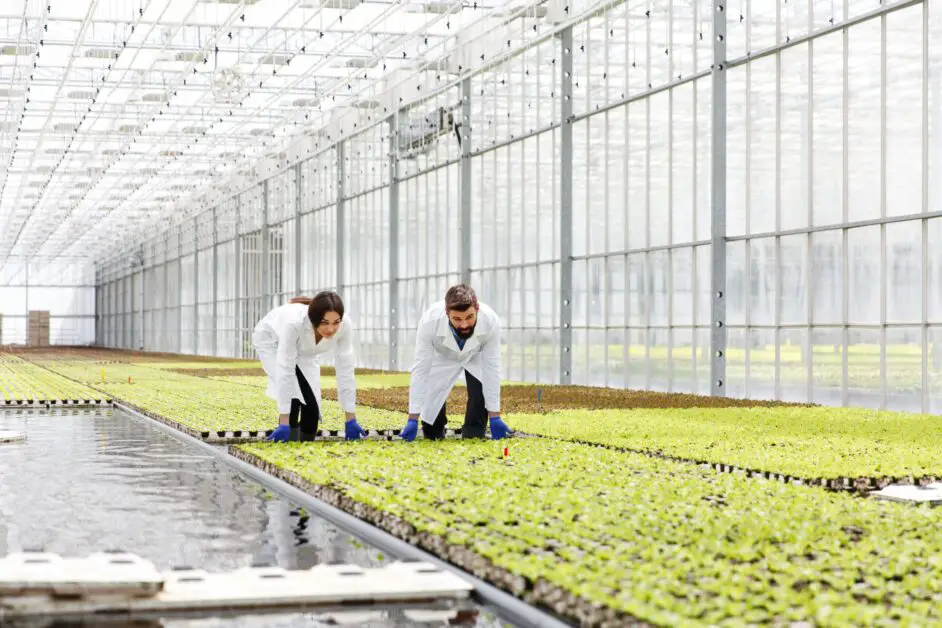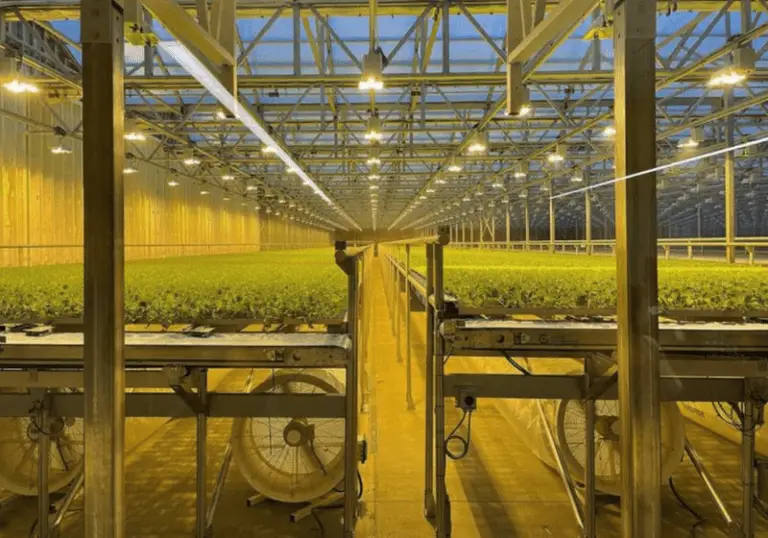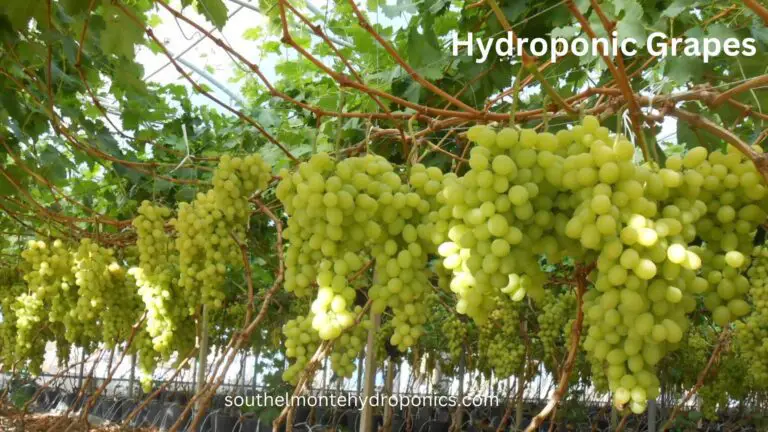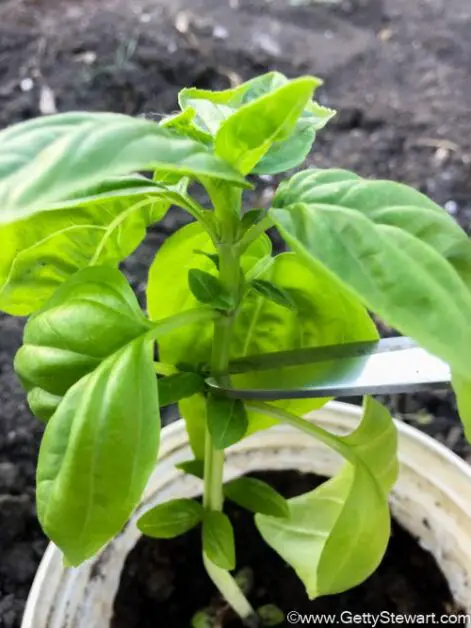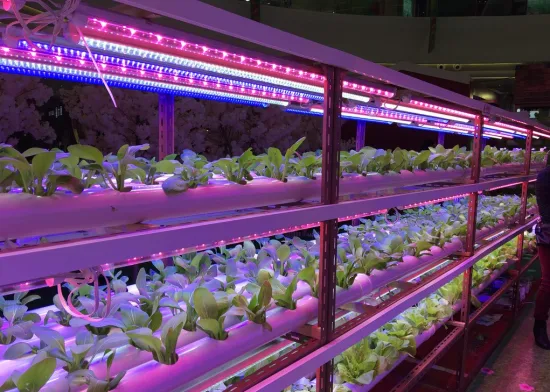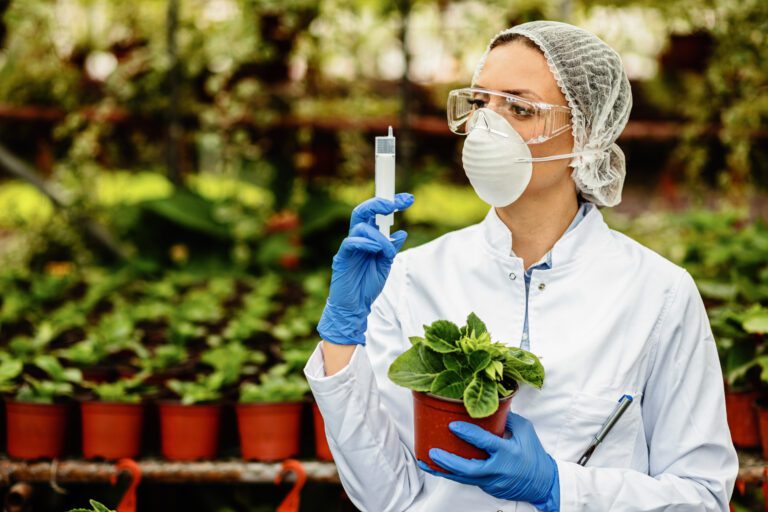Tap Water and Hydroponics: Can They Work Together?
Table of Contents
Understanding Hydroponics: An Overview of Soilless Cultivation
Hydroponics, also known as soilless cultivation, is a method of growing plants without the use of traditional soil. Instead, plants are grown in a nutrient-rich water solution that provides them with all the necessary elements for their growth and development. This innovative technique offers several advantages over conventional soil-based gardening, making it increasingly popular among gardening enthusiasts.
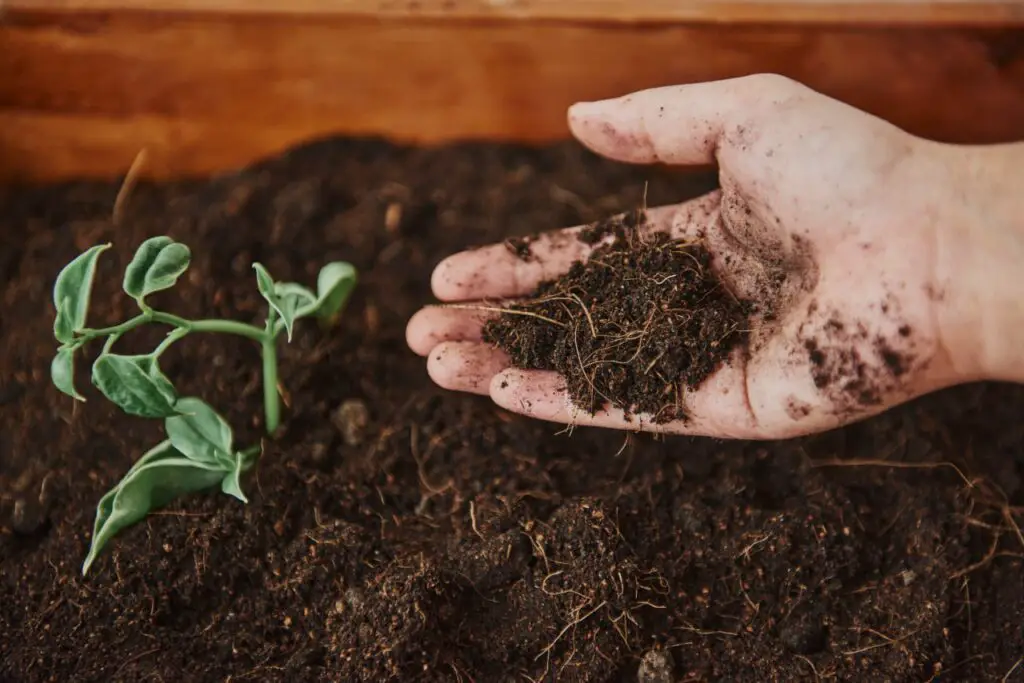
One of the key benefits of hydroponics is its ability to optimize resource utilization. With this method, water and nutrients are delivered directly to the plant roots, minimizing wastage and promoting efficient uptake. Additionally, since soil is not required, hydroponic systems can be set up in various locations, including urban environments with limited space. This makes it a versatile and flexible approach for cultivation, allowing individuals to grow a wide variety of plants in a controlled and precise manner.
Hydroponics also provides the opportunity for year-round cultivation, as it eliminates dependence on seasonal changes and climatic conditions. By controlling factors such as temperature, humidity, and lighting, gardeners can create optimal growing conditions for their plants at any time of the year. This not only results in higher yields and faster growth rates but also enables the cultivation of crops that are typically unsuitable for the local climate. With hydroponics, gardening enthusiasts can explore a whole new world of possibilities and expand their repertoire of plant species.
The Role of Water in Hydroponics: Key Considerations
Water is a vital component in hydroponics, playing a critical role in the growth and development of plants. When it comes to hydroponic systems, the quality of water used is crucial. It not only affects the availability and absorption of nutrients but also impacts the overall health of the plants. Therefore, it is essential for hydroponic growers to consider key factors when it comes to water in their cultivation systems.
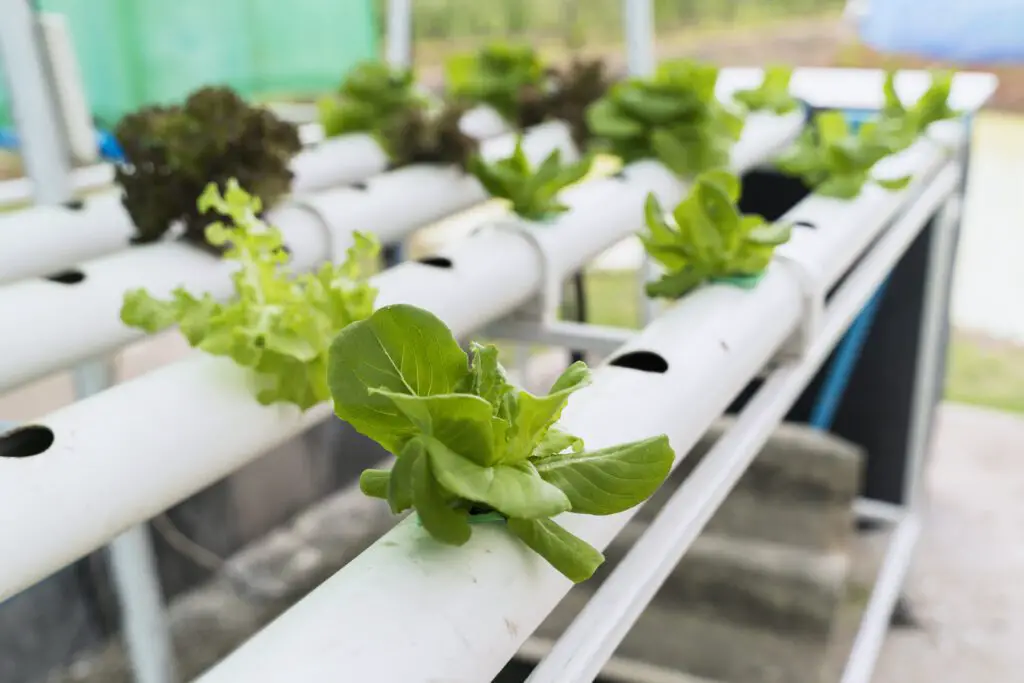
One important consideration is the pH level of the water. pH is a measure of the acidity or alkalinity of the water, and maintaining the correct pH range in hydroponics is crucial for nutrient availability and uptake. Most plants prefer slightly acidic conditions, with a pH range of 5.5 to 6.5. Deviations from this range can lead to nutrient imbalances and hinder plant growth. Regular testing and monitoring of water pH is necessary to ensure that it remains within the optimal range for the specific crops being grown. Various pH adjustment techniques, such as the use of pH-up or pH-down solutions, can also be employed to maintain the desired pH levels.
Evaluating Tap Water Quality for Hydroponic Systems
Tap water quality is a critical factor to consider when setting up a hydroponic system. Ensuring the water used in your system is free from contaminants or excessive minerals is vital for the health and productivity of your plants. Evaluating tap water quality involves assessing various parameters, such as pH levels and electrical conductivity (EC) levels.
pH levels play a crucial role in hydroponics as they determine the acidity or alkalinity of the water. Most plants thrive best in slightly acidic to neutral environments, with a pH range of 5.5 to 6.5. Water with a pH outside this range can affect nutrient availability and absorption, leading to stunted growth or nutrient deficiencies. Therefore, it is important to test and adjust the pH of your tap water accordingly to ensure optimal conditions for your plants.
Electrical conductivity (EC) levels measure the concentration of dissolved salts in the water. While some minerals are necessary for plant growth, excessive levels can hinder nutrient uptake and cause damage to the roots. High EC levels in tap water indicate the presence of minerals such as calcium, magnesium, or sodium, which may need to be addressed through appropriate water treatment methods. It is advisable to regularly test the EC levels of your tap water and adjust as needed to maintain a healthy balance for your hydroponic system.
In the next section, we will delve further into assessing tap water parameters, focusing on the impact of tap water on nutrient availability in hydroponics.
Assessing Tap Water Parameters: pH and EC Levels
To ensure a successful hydroponic system, it is essential to regularly assess the parameters of tap water, particularly the pH and EC levels. These two measurements play a crucial role in the overall health and nutrient availability for your plants.
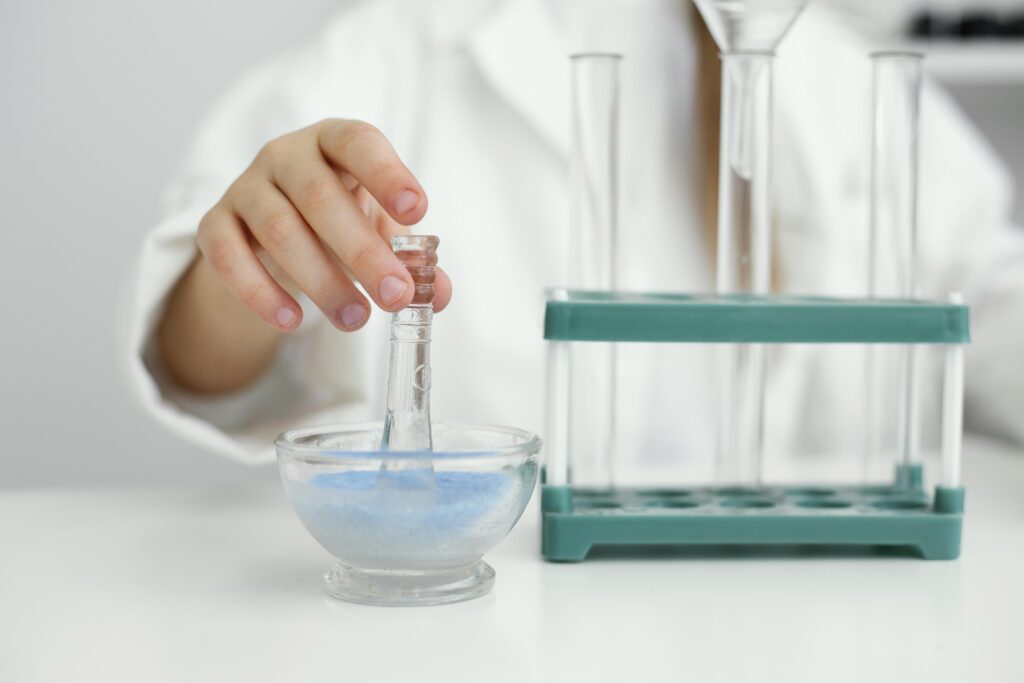
The pH level of tap water refers to its acidity or alkalinity, which can significantly impact the nutrient uptake of your hydroponic plants. Ideally, the pH level should be within a specific range that varies depending on the types of plants you are cultivating. Most hydroponic systems thrive in a slightly acidic environment, with a pH range between 5.5 and 6.5. It is important to regularly test and adjust the pH level of your tap water to ensure optimal nutrient absorption and prevent deficiencies or toxicities in your plants.
Electrical Conductivity (EC) is another crucial parameter to assess in your tap water. EC measures the concentration of dissolved salts and minerals in the water, which directly affects the nutrient levels available to your plants. Different plant species have varying EC requirements, and it is vital to maintain the appropriate range for your specific crops. EC levels can be adjusted through the use of additives and supplements, ensuring proper nutrition for your hydroponic plants and maximizing their growth potential.
In the next section, we will delve deeper into the significance of tap water on the availability of nutrients in hydroponics. By understanding these parameters and their impact on your system, you will be better equipped to create an optimal growing environment for healthy and thriving plants.
The Impact of Tap Water on Nutrient Availability in Hydroponics
Tap water quality can have a significant impact on nutrient availability in hydroponics systems. The composition of tap water can vary greatly depending on the source and treatment methods used by water authorities. One key factor that affects nutrient availability is the pH level of tap water. pH is a measure of the acidity or alkalinity of water, and it plays a crucial role in nutrient solubility. In hydroponics, the optimal pH range for nutrient uptake by plants is typically between 5.5 and 6.5. If tap water has a higher or lower pH than this range, it can affect the availability and absorption of essential nutrients by plant roots. It is recommended to regularly test the pH of tap water and adjust it if necessary using pH buffers or acidification agents to ensure optimal nutrient uptake by plants.
Another important factor to consider is the electrical conductivity (EC) level of tap water. EC is a measure of the concentration of dissolved salts in water, which can include essential nutrients as well as other contaminants. High levels of EC in tap water can indicate the presence of excessive salts that may interfere with nutrient availability or cause nutrient imbalances in hydroponic systems. Conducting regular EC measurements and monitoring the quality of tap water can help identify and address any issues that may affect nutrient availability for plants.
In summary, tap water quality, particularly its pH and EC levels, can have a significant impact on nutrient availability in hydroponics systems. Keeping these factors in check and ensuring optimal conditions for nutrient uptake can help maximize the growth and productivity of plants in a soilless cultivation environment.
Addressing Common Concerns: Is Tap Water Safe for Hydroponics?
Tap water is a commonly used water source for hydroponic systems due to its availability and convenience. However, concerns about its safety often arise in the minds of gardening enthusiasts. It is essential to address these concerns and provide accurate information to help growers make informed decisions.
One of the main worries surrounding tap water is the presence of contaminants. While it is true that tap water can contain various impurities, such as chlorine, heavy metals, and pesticides, the levels at which they are present are typically within safe limits for most hydroponic plants. Additionally, many water treatment plants use methods like filtration and disinfection to ensure the quality of tap water. However, it is important to note that the specific composition of tap water can vary depending on the location, which may require growers to assess and treat their tap water accordingly to create an optimal environment for their crops.
Potential Challenges of Using Tap Water in Hydroponic Systems
Tap water can present potential challenges when used in hydroponic systems due to its variable quality and composition. One of the main concerns is the presence of contaminants, such as chlorine, chloramines, and heavy metals, which can negatively impact plant health and growth. Chlorine is commonly added to municipal water supplies as a disinfectant, but it can harm beneficial microbial activity in the hydroponic solution. Chloramines, a combination of chlorine and ammonia, are also used for water treatment and can have similar negative effects. Additionally, heavy metals like lead, copper, and zinc may be present in tap water, which can accumulate in the nutrient solution and cause toxicity issues for plants.
Here are some points addressing common concerns about the safety of tap water for hydroponics:
- Water Quality Varies:
- Tap water quality varies regionally, and some areas may have water that is suitable for hydroponics without additional treatment.
- Chlorine and Chloramine:
- Many municipal water supplies use chlorine or chloramine to disinfect water. These can be harmful to beneficial microorganisms in hydroponic systems.
- Dechlorination may be necessary, and options include using a dechlorinator or letting the water sit exposed to air for 24 hours before use.
- Water pH Levels:
- Tap water pH levels may not be within the optimal range for hydroponic nutrient absorption by plants.
- pH adjustments using pH-up or pH-down solutions may be required to bring the water to the desired level.
- Hard Water Concerns:
- Some tap water sources are hard, containing high levels of minerals like calcium and magnesium. This can lead to nutrient imbalances.
- Water softening or the use of specialized nutrient formulations can help address hard water issues.
- Testing and Monitoring:
- Regular testing of tap water for pH, EC (electrical conductivity), and nutrient content is essential for ensuring it meets the needs of the hydroponic system.
- Monitoring water quality helps in making timely adjustments and prevents potential issues.
- Contaminants:
- Tap water may contain impurities or contaminants, such as heavy metals, that could affect plant health.
- Water filtration systems, like carbon filters, can be employed to remove impurities.
- Microbial Concerns:
- Microbial pathogens present in tap water can harm plant roots. It’s advisable to use water treatment methods like UV sterilization or ozone injection to reduce microbial risks.
- Nutrient Interaction:
- Tap water may contain minerals that can interact with hydroponic nutrients, affecting their availability to plants.
- Adjusting nutrient solutions based on water quality tests helps maintain an optimal nutrient balance.
- Water Temperature:
- Tap water temperature can vary seasonally, impacting the overall temperature of the hydroponic system.
- Measures such as adjusting the water temperature or using a water chiller can help maintain an optimal growing environment.
- Local Regulations:
- Be aware of local regulations regarding water usage and potential restrictions for certain hydroponic practices.
Another challenge posed by tap water is its inconsistent pH and electrical conductivity (EC) levels. pH refers to the acidity or alkalinity of the water, while EC measures the concentration of dissolved salts and minerals. Fluctuations in these parameters can affect nutrient availability and uptake by the plants, leading to nutrient deficiencies or toxicities. Tap water with a high pH can limit the availability of certain essential nutrients, such as iron, while a low pH can result in nutrient imbalances and impair plant growth. Similarly, excessive levels of dissolved salts and minerals can interfere with nutrient absorption, affecting plant health and productivity.
To address these challenges, it is important to evaluate and treat tap water before using it in hydroponic systems. Various methods, such as carbon filtration, dechlorination, and reverse osmosis, can be employed to remove contaminants and adjust pH and EC levels. By taking the necessary precautions and implementing appropriate water treatment measures, gardening enthusiasts can overcome the challenges associated with tap water and create optimal growing conditions for their hydroponic plants.
Enhancing Tap Water for Hydroponics: Treatment Options
Tap water can serve as a convenient and readily available source of water for hydroponic systems. However, it is important to note that the quality of tap water can vary significantly depending on the source and geographical location. In some cases, tap water may contain high levels of chlorine, chloramines, or other contaminants that can be detrimental to plant growth. To enhance the quality of tap water for hydroponics, several treatment options are available.
Treatment Options for Enhancing Tap Water in Hydroponics
| Concern | Treatment Options |
|---|---|
| Chlorine/Chloramine Removal | – Use a dechlorinator chemical. – Allow water to sit exposed to air for 24 hours. |
| pH Adjustment | – pH-up or pH-down solutions for pH adjustment. |
| Hard Water Issues | – Water softening methods. – Use specialized nutrient formulations for hard water. |
| Water Quality Testing | – Regularly test for pH, EC, and nutrient content. |
| Contaminant Removal | – Water filtration systems (e.g., carbon filters). |
| Microbial Control | – UV sterilization. – Ozone injection. |
| Nutrient Interaction Management | – Adjust nutrient solutions based on water quality tests. |
| Water Temperature Control | – Adjust water temperature. – Use a water chiller if needed. |
| Compliance with Regulations | – Adhere to local water usage regulations. |
One common method for treating tap water is through the use of activated carbon filters. These filters are designed to remove chlorine and chloramines from the water, improving its suitability for hydroponic applications. Additionally, carbon filters can help eliminate other impurities and organic matter, enhancing the overall water quality. Another treatment option is the use of reverse osmosis (RO) systems, which effectively remove a wide range of contaminants, including heavy metals, pesticides, and bacteria. RO systems provide a purified water source that can be beneficial for maintaining optimal nutrient availability and preventing potential nutrient imbalances in hydroponic systems.
Exploring Alternative Water Sources for Hydroponics
Hydroponics is a soilless cultivation technique that relies on water to deliver essential nutrients to plants. While tap water is commonly used in hydroponic systems, exploring alternative water sources can offer both benefits and challenges. One potential alternative is rainwater harvesting, which has gained popularity among hydroponic enthusiasts.
Rainwater is generally clean and free from harsh chemicals or contaminants found in tap water. It is also naturally soft, with a low mineral content, making it ideal for hydroponic systems that require precise nutrient management. Utilizing rainwater can help maintain optimal pH and electrical conductivity (EC) levels, facilitating better nutrient absorption by plants. Moreover, rainwater harvesting promotes sustainability, as it reduces dependence on municipal water supplies.
However, there are a few considerations to keep in mind when using rainwater in hydroponics. First, rainwater should be collected from a clean surface, away from potential sources of contamination such as roofs treated with harmful chemicals. Additionally, rainwater may vary in composition and quality depending on factors like region, season, and pollution levels. Therefore, it is advisable to periodically test rainwater for pH and EC levels, as well as any potentially harmful components. Implementing appropriate filtration and disinfection methods may be necessary to ensure the water used is safe and suitable for hydroponic cultivation.
Rainwater Harvesting for Hydroponics: Pros and Cons
Rainwater harvesting is becoming an increasingly popular option for hydroponic gardening enthusiasts due to its potential benefits. One of the main advantages of using rainwater for hydroponics is that it is a natural and renewable resource. Unlike tap water, rainwater is free from chemicals such as chlorine and fluoride, which can potentially harm the delicate balance of nutrients in hydroponic systems. Furthermore, rainwater typically has a lower pH and EC level compared to tap water, which can reduce the need for pH adjustment and minimize the risk of nutrient imbalances.
Another advantage of rainwater harvesting is its potential to save money. By utilizing rainwater, gardeners can significantly reduce their dependence on municipal water supplies, which often come with hefty water bills. Additionally, rainwater can be stored and reused, further contributing to cost savings in the long run. This makes rainwater harvesting an environmentally friendly option that aligns with the principles of sustainability and resource conservation.
However, it is important to consider the potential drawbacks of rainwater harvesting for hydroponics as well. One key concern is the quality and purity of rainwater. Contaminants such as air pollutants, dust, and bird droppings can affect the quality of collected rainwater and, subsequently, the health and growth of the plants. Therefore, it is crucial to implement proper filtration and purification methods to ensure the cleanliness of the harvested rainwater. Additionally, the availability of rainwater can be inconsistent, particularly in regions with dry seasons or low annual rainfall, which may require gardeners to supplement with alternative water sources. Proper management and storage of rainwater are essential to maximize its benefits and minimize potential risks in hydroponic systems.
Overall, rainwater harvesting offers several advantages for hydroponic gardening, including its sustainability, potential cost savings, and absence of harmful chemicals. However, careful consideration must be given to the quality and availability of rainwater to ensure optimal growth and health of hydroponic plants. By implementing appropriate filtration and storage methods, gardeners can harness the benefits of rainwater while mitigating potential drawbacks in their hydroponic systems.
The Benefits of Reverse Osmosis Water in Hydroponic Systems
Reverse osmosis (RO) water is highly beneficial for hydroponic systems due to its purity and consistency. RO water undergoes a process where contaminants and impurities are removed by forcing water through a semipermeable membrane. This ensures that the water used in hydroponics is free from harmful substances, such as chlorine, heavy metals, pesticides, and pathogens, which can negatively impact plant growth and overall system health.
The purity of RO water enables growers to have precise control over the nutrient solution composition, as they can accurately measure and adjust the exact amount of nutrients needed for optimal plant growth. This is particularly advantageous when cultivating sensitive or specialty crops with specific nutritional requirements. The absence of impurities also reduces the risk of nutrient imbalances or toxic buildup, ensuring healthier plants and higher yields. Furthermore, the low mineral content of RO water helps prevent clogging of irrigation systems and reduces the need for regular system maintenance, saving time and effort for growers.
In addition to its purity, RO water provides consistency in quality, regardless of variations in tap water sources or seasonal changes. This reliability is crucial for maintaining a stable and controlled growing environment, as fluctuations in water quality can disrupt nutrient uptake and lead to inconsistent plant growth. By using RO water, growers can achieve consistent and predictable results in their hydroponic systems, thus maximizing productivity and ensuring the success of their crops.
Understanding Water-Soluble Nutrients for Hydroponics
Water-soluble nutrients play a crucial role in hydroponics, as they provide the essential elements that plants need for their growth and development. These nutrients are dissolved in the water, allowing for easy absorption by the plant roots. In hydroponic systems, the nutrient solution is carefully formulated to provide a balanced mix of macronutrients, such as nitrogen, phosphorus, and potassium, as well as micronutrients like iron, zinc, and manganese.
One significant advantage of using water-soluble nutrients in hydroponics is the ability to precisely control and adjust the nutrient levels. This control allows for optimal nutrient uptake by the plants, promoting healthy growth and maximizing yields. Additionally, the availability of nutrients in a water-soluble form is higher compared to traditional soil cultivation, where the nutrients are bound to the soil particles and may not be readily available to the plants. This increased availability ensures that the plants can access the nutrients they need when they need them, leading to faster growth and improved overall health.
However, it is important to note that not all water-soluble nutrients are created equal. Different plants have varying nutrient requirements, and it is essential to choose the right nutrient formulation based on the specific crop being grown. Moreover, it is crucial to monitor and adjust the nutrient solution regularly to maintain the proper nutrient balance and prevent nutrient imbalances or deficiencies that can negatively impact plant health. In the next section, we will delve deeper into the specific types of water-soluble nutrients commonly used in hydroponics and their roles in promoting plant growth and development.
• Water-soluble nutrients are dissolved in water for easy absorption by plant roots
• Nutrient solution in hydroponics provides balanced mix of macronutrients and micronutrients
• Precise control of nutrient levels promotes optimal uptake and healthy growth
• Increased availability compared to traditional soil cultivation leads to faster growth and improved health
• Different plants have varying nutrient requirements, so choosing the right formulation is crucial
• Regular monitoring and adjustment of nutrient solution prevents imbalances or deficiencies.
Managing Water Quality in Hydroponics: Best Practices
In order to ensure optimal growth and productivity in hydroponic systems, it is crucial to effectively manage the quality of water being used. Here are a few best practices to consider:
1. Regular monitoring: Regularly test the water parameters such as pH and electrical conductivity (EC) levels to maintain a stable and suitable environment for plant growth. This will help you identify any deviations or fluctuations in the water quality and allow for timely adjustments.
2. pH adjustment: Maintain the pH levels within the appropriate range for the specific plant species being cultivated. Most hydroponic crops thrive in a slightly acidic environment with a pH range of 5.5 to 6.5. Use pH adjustment solutions or chemicals to fine-tune the pH levels as necessary.
Careful management of water quality is vital for the success of any hydroponic system. By monitoring and adjusting key parameters such as pH and EC levels, gardeners can create an optimal environment for plant growth and ensure maximum nutrient availability.
Case Studies: Success Stories of Using Tap Water in Hydroponics
Case studies provide valuable insights into real-life experiences and successes, offering tangible evidence of the viability of using tap water in hydroponics. These success stories not only showcase the potential benefits but also shed light on the feasibility and practicality of utilizing this readily available water source.
In one case study conducted by a team of hydroponic researchers, a commercial greenhouse specializing in lettuce production successfully implemented tap water as the primary irrigation source. The study monitored various parameters such as nutrient levels, pH, and plant growth over a span of six months. The results revealed that the use of tap water did not hinder nutrient uptake or cause any negative effects on plant health. In fact, the lettuce plants exhibited healthy growth, robust leaf development, and a comparable yield to those grown using alternative water sources. This case study highlights the compatibility of tap water with hydroponic systems and its potential as a cost-effective solution for both small-scale and large-scale growers.
Another case study focused on a rooftop hydroponic garden in an urban setting, where tap water was the only viable option for irrigation due to limited access to alternative water sources. Despite initial concerns about tap water quality, the study demonstrated that careful monitoring and appropriate adjustments to pH and nutrient levels ensured optimal growing conditions and successful crop cultivation. The garden thrived, producing an abundant harvest of vegetables without any notable negative effects from tap water usage. This case study exemplifies the adaptability of hydroponics systems and the potential to overcome challenges related to water quality through proper management techniques.
These case studies unequivocally demonstrate that tap water can be effectively used in hydroponics without compromising plant health or overall system performance. While further research is needed to explore different plant species, growing conditions, and geographic locations, these success stories encourage growers to consider tap water as a viable and accessible option for their hydroponic systems. By leveraging the advantages of tap water, both in terms of its availability and economic feasibility, gardeners can harness its potential to achieve sustainable and successful hydroponic cultivation.
Can I use tap water directly in my hydroponic system?
Yes, tap water can be used in hydroponics systems, but it is important to assess its quality and treat it if necessary.
What parameters should I consider when evaluating tap water for hydroponics?
The pH level and electrical conductivity (EC) are key parameters to assess tap water for hydroponics. These factors determine water’s suitability for nutrient absorption by plants.
How does tap water impact nutrient availability in hydroponics?
Tap water can affect the availability and absorption of nutrients in hydroponics. It is important to ensure that tap water is within the optimal pH and EC range for nutrient uptake by plants.
Is tap water safe to use in hydroponics?
Tap water can be safe to use in hydroponics, but it may contain impurities or high levels of minerals that can negatively affect plant growth. It is recommended to assess and potentially treat tap water to ensure plant health.
What are the potential challenges of using tap water in hydroponic systems?
Challenges with tap water in hydroponics can include high mineral content, fluctuating pH levels, and the presence of contaminants. These challenges may require additional treatment or adjustment in the hydroponic system.
How can tap water be enhanced for hydroponics?
Tap water can be enhanced for hydroponics through various treatment options such as filtration, pH adjustment, and the addition of necessary nutrients. This helps optimize water quality for plant growth.
Are there alternative water sources for hydroponics?
Yes, alternative water sources for hydroponics include rainwater, well water, and reverse osmosis (RO) water. Each source has its own considerations and potential benefits for hydroponic systems.
What are the pros and cons of using rainwater in hydroponics?
Rainwater can be a viable alternative for hydroponics as it is generally clean and lacks minerals. However, it may contain contaminants depending on the environment and collection method, requiring proper filtration and treatment.
What are the benefits of using reverse osmosis (RO) water in hydroponics?
RO water is highly purified and free from impurities, minerals, and contaminants. It allows for precise control over nutrient levels and pH, reducing the risk of imbalances and optimizing plant growth.
How can water quality be managed in hydroponics?
Regular monitoring of water parameters, such as pH and EC levels, is essential for managing water quality in hydroponics. Adjustments and treatments can be made based on these measurements to maintain optimal conditions for plant growth.

